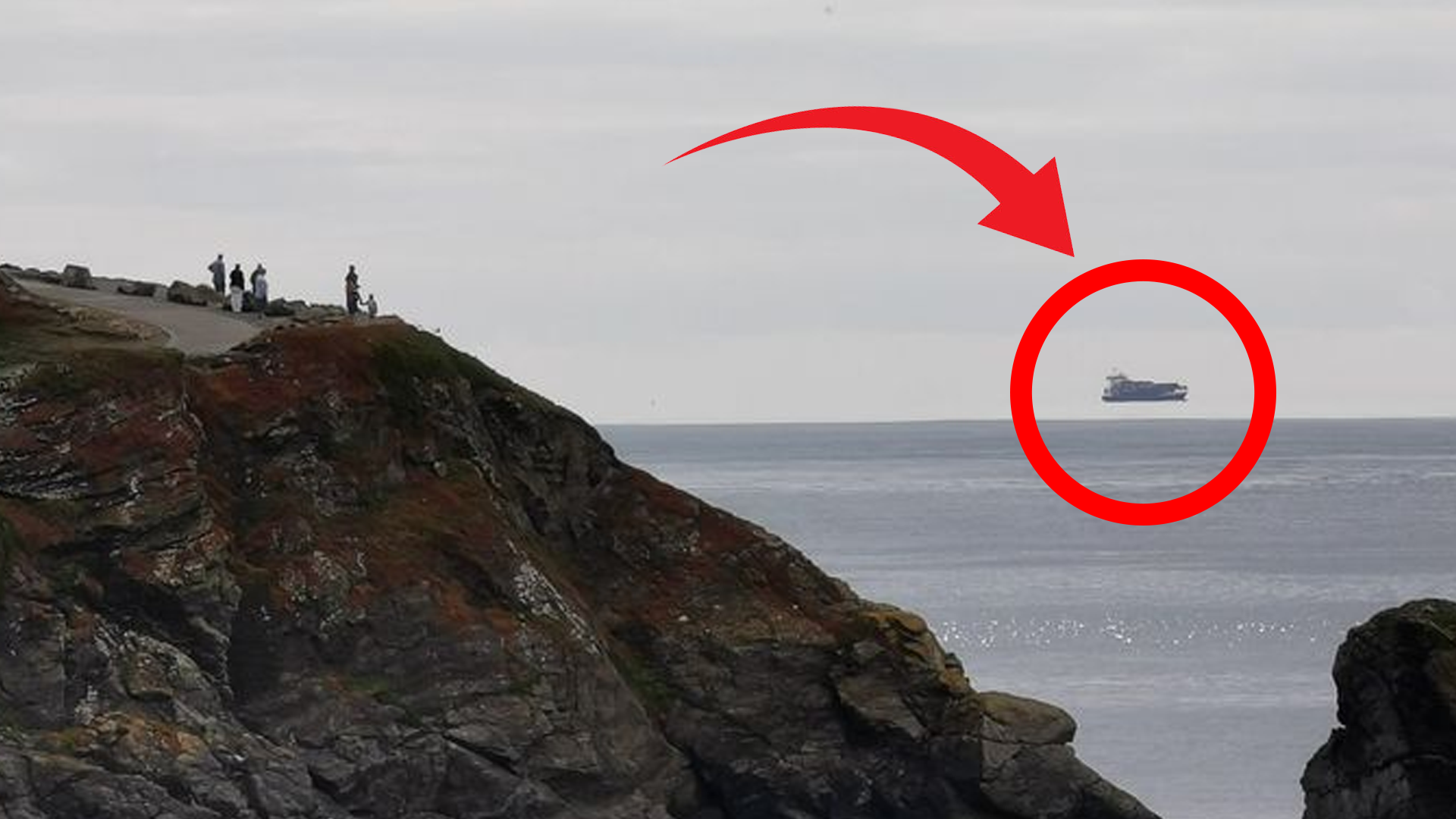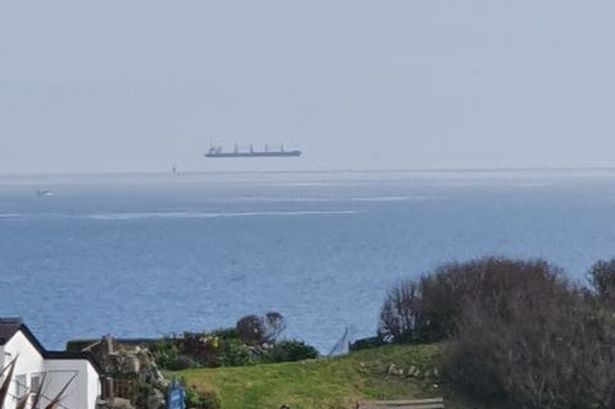Another day, another flying boat illusion

Summer is well underway in the UK, and a peculiar natural phenomenon caused by the sun has provided another example of one of our favourite optical illusions. Yup, that mind-boggling hovering boat has been baffling folk once more, and this time it's a crowd of tourists who couldn't believe their eyes.
An astonished photographer captured the moment a cargo ship was sailing well above the horizon line on the normally peaceful Cornish coastline (see below). Can you work how this nautical-themed optical illusion works? This phenomenon is so trippy that we've added it to our roundup of the best optical illusions.
Liam Ball shared the image of the flying boat on Twitter, and if you've got questions, we're here to answer them. Aptly named 'Fata Morgana', ('mirage' in Italian), these natural illusions happen when cold air sits below warm air directly above the sea. This specific atmospheric condition bends the light and distorts the image. Check out this BBC article if you'd like more science-y stuff.
In fact, according to historian Tim Maltin, this distortion could have even caused the Titanic to sink in 1912. "On that occasion the very cold air near the sea caused the distant horizon to appear higher than normal," Maltin told CornwallLive. "This is known as a miraging strip at the horizon, which appeared like a haze although the weather was crystal clear, causing the fatal iceberg to be seen too late". Serious stuff.

Some believe this mystifying sight is actually the reality behind several different myths (like the Flying Dutchman), which wouldn't surprise us given how often this type of illusion pops up. We first covered the floating ship phenomenon in March last year and, just last month, tourists spotted another flying ship on the coast of Cornwall (it's either an illusion, or the Cornish coastline is very popular with ghost sailors).
This peculiar phenomenon still boggles our minds, and we hope to see it ourselves soon in real life. We'll have one of the best cameras or best camera phones on us at all times, just in case.
Read More:
Daily design news, reviews, how-tos and more, as picked by the editors.

Amelia previously worked as Creative Bloq’s Staff Writer. After completing a degree in Popular Music and a Master’s in Song Writing, Amelia began designing posters, logos, album covers and websites for musicians. She covered a range of topics on Creative Bloq, including posters, optical illusions, logos (she's a particular fan of logo Easter eggs), gaming and illustration. In her free time, she relishes in the likes of art (especially the Pre-Raphaelites), photography and literature. Amelia prides herself on her unorthodox creative methods, her Animal Crossing island and her extensive music library.
- Georgia CogganEditor
